The first-ever bird count at Karnala Bird Sanctuary
organized by Green Works Trust in association
with Maharashtra Forest Department.
19th and 20th December 2020

The first-ever bird count at Karnala Bird Sanctuary
organized by Green Works Trust in association
with Maharashtra Forest Department.
19th and 20th December 2020
Introduction
To birders, Karnala Bird Sanctuary needs no introduction. It is indeed a very promising place for birding with a handsome checklist of species. Flocks of birders visit the sanctuary and record various species during their birding. But, birding-beyond-documenting-just-the-species is more important. An overall study of birds is necessary. Not just the number of species, but also their population, their preferred micro habitats, their migration patterns and many other factors are important aspects that need to get documented. Scientific study of birds and bird population on a continuous basis is necessary to gather such data which will help researchers use bird activity as reliable indicators of climate change.
Green Works Trust (GWT) strongly believes that along with scientific study, it is necessary to sensitize people about the importance of biodiversity. This will prove to be a powerful tool to conserve the habitat. Involving common people in such scientific activities can change their vision to look towards conservation.
Thus, the ‘Karnala Bird Count (KBC)’ event was conceptualized by Green Works Trust (GWT) with a two-fold benefit — Scientific study and Citizen Awareness. It was organized with the strong support of Maharashtra Forest Department.

Aim of KBC
Monitoring bird species & population of Karnala Bird Sanctuary through a ‘Citizen Science’ initiative
Objectives of KBC
This event was originally scheduled in March 2020. For this event, GWT had invited common citizens to participate in a scientific study under the guidance of experts. The announcements were made and we got responses from various States of India- Chhattisgarh, Gujarat, Madhya Pradesh, West Bengal and Maharashtra. But, due to the pandemic situation and the following lockdown, this event had to be postponed. After the ‘Unlock India’ was announced, Green Works Trust and Maharashtra Forest Department decided to conduct this long-awaited event on 19th and 20th December 2020. However, the entry of participants was restricted only to Maharashtra residents.
The Survey Area
10 routes/trails were identified to cover four distinct habitat types of Karnala — Hill Forests, Open Forest, Grassland & Water Bodies. Some of these trails already had names and a few trails were named as per convenience for the event.
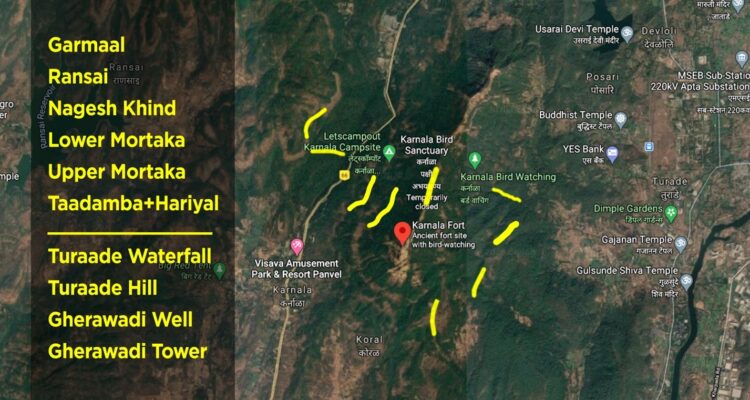
The Methodology
The 2-day survey was conducted using 2 scientific methods of collecting data— Line Transect method and Point Count method. 9 transects were identified on 9 trails (shown on the map) and 5 point count locations were defined on 1 trail (Taadamba-Hariyal).
The Teams
27 participants were selected for the event and 9 teams were carefully configured such that there was 1 bird expert, 1 photographer and 1 e-Bird user in every team. Each team was led by a GWT representative and a Forest guard.
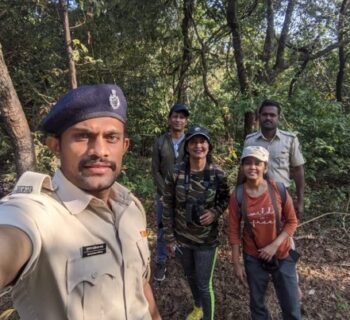
Team ‘Garmaal-Ransai’
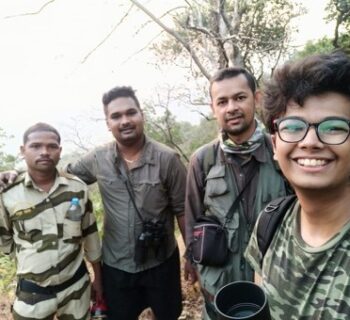
Team ‘Nageshkind-Karnalafort’
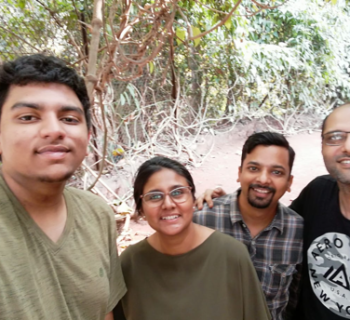
Team ‘Hariyal-Taadamba’
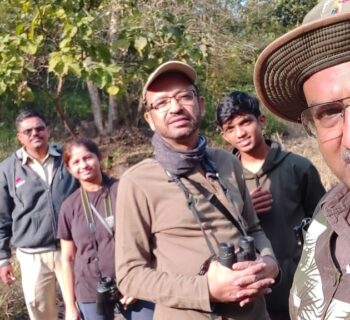
Team ‘Lower Mortaka’
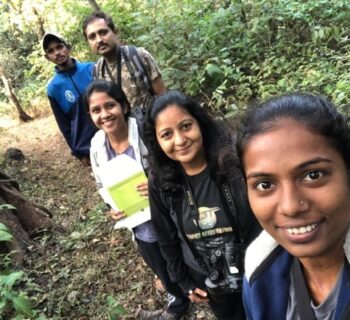
Team ‘Upper Mortaka’
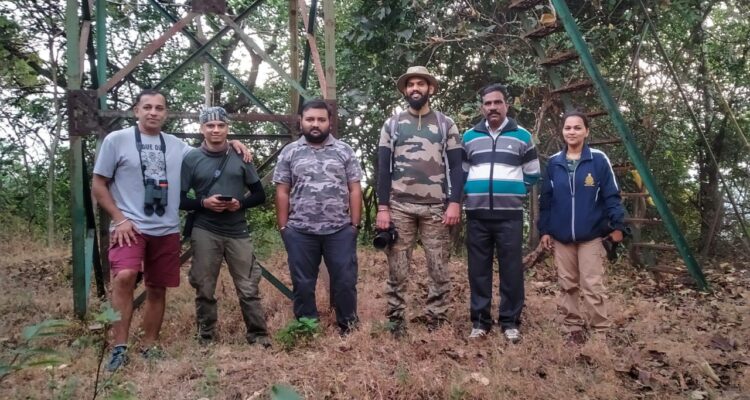
Team ‘Gherawadi Tower’
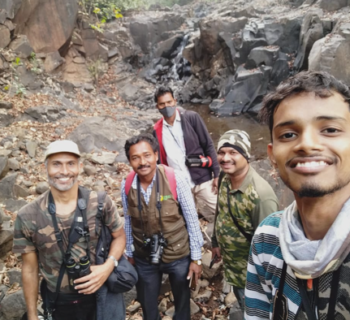
Team ‘Gherawadi Well’
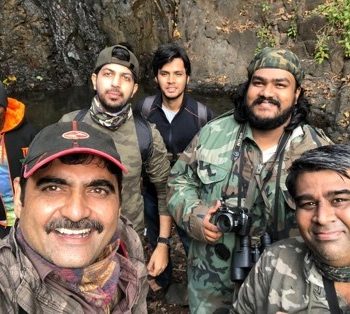
Team ‘Turaade Waterfall’
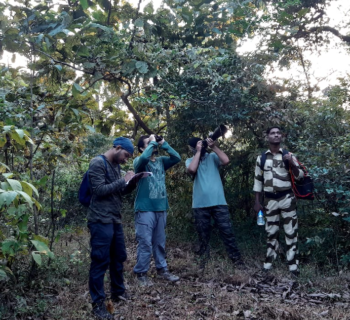
Team ‘Turaade Hill’
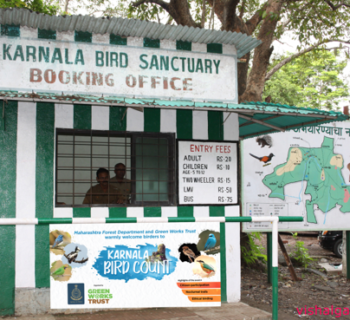
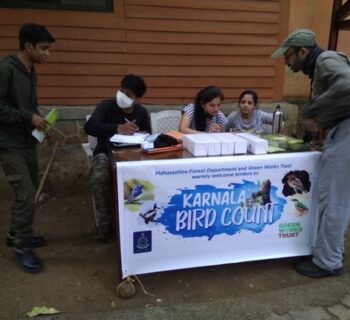

Registrations desk and welcoming of participants with registration kits
The ‘Karnala Bird Count’ event was inaugurated by honorable APCCF Shri Sunil Limaye along with other senior officials DCF Dr. Pingle, ACF Shri Kupte and RFO Shri Chavan.
This was followed by an in-depth briefing session by Shri Nikhil Bhopale (Founder, Green Works Trust) to all participants regarding conducting the bird count using scientific methodologies. Prathamesh Desai conducted another session to guide participants
on how to document the observations using eBird app effectively and efficiently
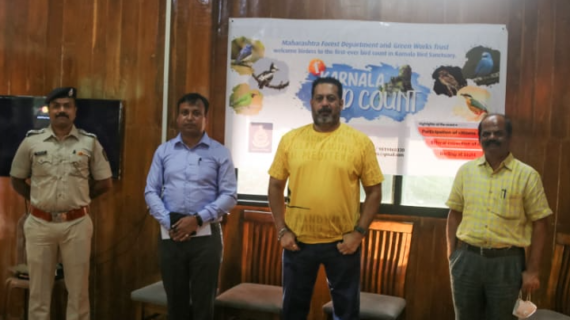
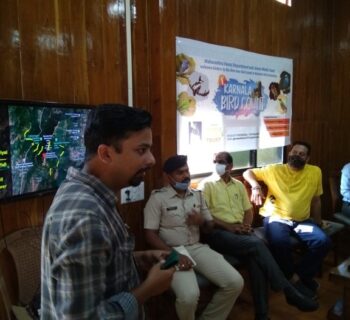
Nikhil Bhopale briefing participants
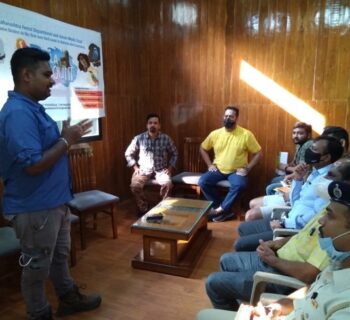
Prathamesh Desai’s hands-on
eBird training to participants
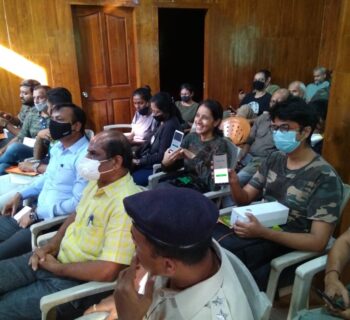
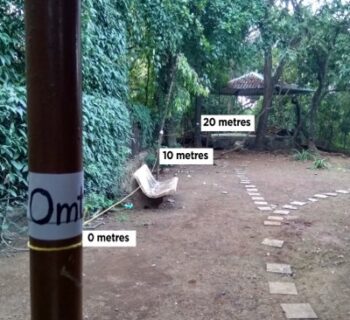
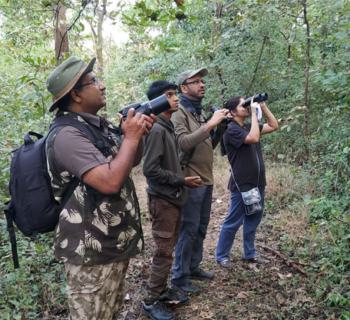
On-field Activity
Nine teams visited various trails in the sanctuary. Species and their population were documented by participants on the field. Each team submitted their checklists after which all records (sighted or heard) were meticulously ratified by experts Nikhil Bhopale and Prathamesh Desai to ensure accuracy and authenticity of the data collected.
Sightings:
Total of 103 species* of birds were documented during the count. Highlights of the sightings were species like Alpine Swift, Indian Scops Owl, Indian Eagle Owl, Brown Wood Owl, Indian Pitta, Common Hawk Cuckoo. A thrilling sighting of a Peregrine Falcon carrying a Parakeet and feeding on it was documented by Team ‘Nagesh Khind’ who trekked right up till the Karnala fort.
Bonus sightings: Various species of snakes — Bamboo Pit Viper, Common Wolf Snake, Travancore Wolf Snake, Beddome’s Cat Snake, Common Cat Snake and Vine snake were seen during the survey. Several species of spiders, frogs, geckos, butterflies and other insects were spotted by the participants during their birding trails.
New learning for participants: During the 2-day bird count, the participants got hands-on experience of how scientific surveys are done. They were very happy to learn these methods as it gave them a completely new perspective for birding.
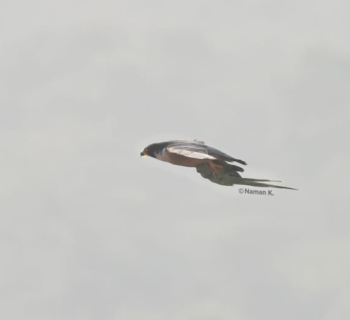
Learning for forest guards: This event was an opportunity for the on-ground staff to observe and interact with serious birders on the field, thus improving their understanding and identification of birds. They expressed their gratitude towards the participants and experts for the experience and guidance during the event.
Improved awareness amongst participants: GWT emphasized on ethical practices to be used while birding. Strict precautions were taken to conduct the Bird Count without using playbacks or any other unethical methods like flushing out birds.
The Concluding Session
The event concluded with a session chaired by DCF Dr. Pingale. Nikhil Bhopale summarized the observations and listing of the Bird Count. All the participants were given certificates which were distributed by DCF Dr. Pingale. The event was well-appreciated by DCF Dr. Pingale and RFO Shri Chavan. Participants and forest guards also shared their on-field experiences and learnings.
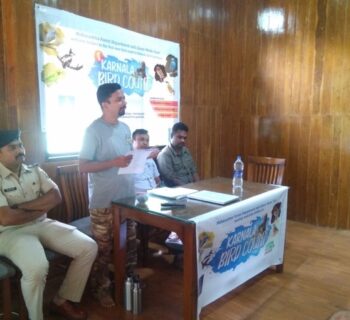
Shri Bhopale sharing the highlights
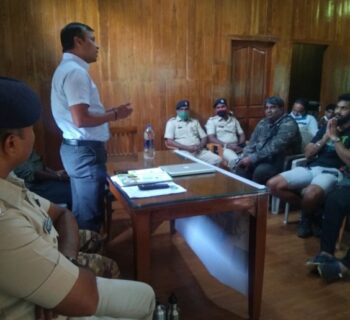
DCF Pingle’s concluding speech

RFO Chavan’s speech

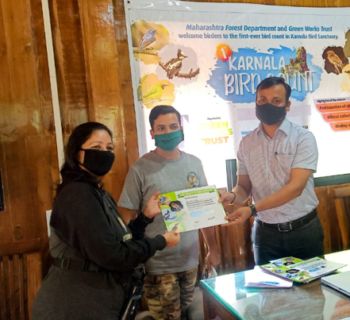
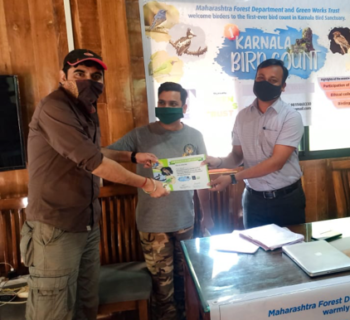
Participants receiving their certificates from DCF Dr. Pingle
The Highlight
The entire event was successfully completed without using any unethical birding methods (like using playback calls) to lure out birds. Ethical birding was given paramount importance throughout the event. GWT who strongly supports the #noplaybackpolicy had put up boards for awareness. GWT also created a special photo frame for participants to click their photos. But this was not just a ‘selfie point’; it was a tool to spread the message of ‘no playback policy’.
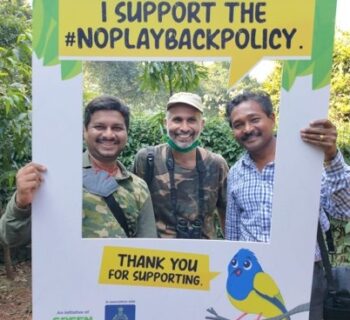
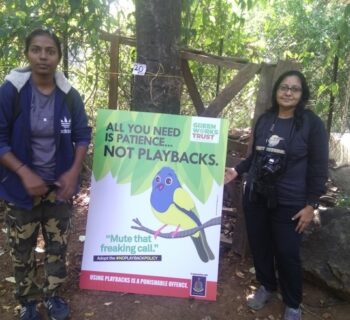

Participants clicking photos in support of the #noplaybackpolicy
The Participants Team
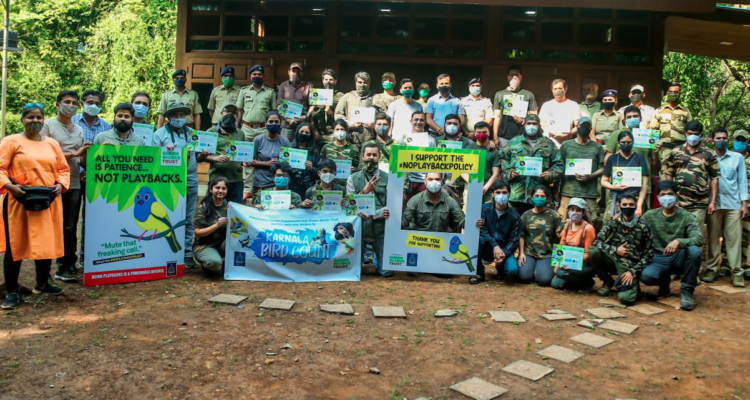
Proud birders of the first-ever Bird Count at Karnala pose with the team of Green Works Trust and
Maharashtra Forest Department
The Forest Department Team
We extend our thanks to Maharashtra Forest Department for their strong and thoughtful support to this initiative.


GWT’s vision
GWT aims at conducting the Bird Count event in 3 different seasons of the year for at least next
5 consecutive years in order to collect meaningful data. We are thankful to the Maharashtra Forest Department for assuring their continued support in this initiative.
GWT also aims at conducting similar events for snakes, spiders, butterflies etc. at various protected areas. We believe that bringing together citizens and the Forest Department for such activities will help in building substantial data about biodiversity and also spread awareness.

*Checklist of species recorded on 19th and 20th December 2020
| Sr. No. | English name | Scientific name |
| 1 | Indian Scimitar-babbler | Pomatorhinus horsfieldii |
| 2 | Jungle Babbler | Turdoides striata |
| 3 | Puff-throated Babbler | Pellorneum ruficeps |
| 4 | Brown-headed Barbet | Psilopogon zeylanicus |
| 5 | Coppersmith Barbet | Psilopogon haemacephalus |
| 6 | Green Bee-eater | Merops orientalis |
| 7 | Red-vented Bulbul | Pycnonotus cafer |
| 8 | Red-whiskered Bulbul | Pycnonotus jocosus |
| 9 | White-browed Bulbul | Pycnonotus luteolus |
| 10 | White-eyed Buzzard | Butastur teesa |
| 11 | Little Cormorant | Microcarbo niger |
| 12 | Greater Coucal | Centropus sinensis |
| 13 | House Crow | Corvus splendens |
| 14 | Large-billed Crow | Corvus macrorhynchos |
| 15 | Common Hawk-cuckoo | Hierococcyx varius |
| 16 | Large Cuckooshrike | Coracina javensis |
| 17 | Laughing Dove | Spilopelia senegalensis |
| 18 | Spotted Dove | Spilopelia chinensis |
| 19 | Ashy Drongo | Dicrurus leucophaeus |
| 20 | Black Drongo | Dicrurus macrocercus |
| 21 | Bronzed Drongo | Dicrurus aeneus |
| 22 | Greater Racket-tailed Drongo | Dicrurus paradiseus |
| 23 | White-bellied Drongo | Dicrurus caerulescens |
| 24 | Booted Eagle | Hieraaetus pennatus |
| 25 | Crested Hawk Eagle | Nisaetus cirrhatus |
| 26 | Crested Serpent-eagle | Spilornis cheela |
| 27 | Cattle Egret | Bubulcus ibis |
| 28 | Peregrine Falcon | Falco peregrinus |
| 29 | Spot-breasted Fantail | Rhipidura albogularis |
| 30 | Black-rumped Flameback | Dinopium benghalense |
| 31 | Pale-billed Flowerpecker | Dicaeum erythrorhynchos |
| 32 | Thick-billed Flowerpecker | Dicaeum agile |
| 33 | Grey-headed Canary-flycatcher | Culicicapa ceylonensis |
| 34 | Red-breasted Flycatcher | Ficedula parva |
| 35 | Tickell’s Blue-flycatcher | Cyornis tickelliae |
| 36 | Verditer Flycatcher | Eumyias thalassinus |
| 37 | Brown-cheeked Fulvetta | Alcippe poioicephala |
| 38 | Indian Pond-heron | Ardeola grayii |
| 39 | Oriental Honey-buzzard | Pernis ptilorhynchus |
| 40 | Common Iora | Aegithina tiphia |
| 41 | Common Kestrel | Falco tinnunculus |
| 42 | White-throated Kingfisher | Halcyon smyrnensis |
| 43 | Black Kite | Milvus migrans |
| 44 | Golden-fronted Leafbird | Chloropsis aurifrons |
| 45 | Jerdon’s Leafbird | Chloropsis jerdoni |
| 46 | Asian Koel | Eudynamys scolopaceus |
| 47 | Dusky Crag Martin | Ptyonoprogne concolor |
| 48 | Eurasian Crag Martin | Ptyonoprogne rupestris |
| 49 | Small Minivet | Pericrocotus cinnamomeus |
| 50 | Black-naped Monarch | Hypothymis azurea |
| 51 | Scaly-breasted Munia | Lonchura punctulata |
| 52 | White-rumped Munia | Lonchura striata |
| 53 | Jerdon’s Nightjar | Caprimulgus atripennis |
| 54 | Black-hooded Oriole | Oriolus xanthornus |
| 55 | Indian Golden Oriole | Oriolus kundoo |
| 56 | Jungle Owlet | Glaucidium radiatum |
| 57 | Indian Paradise-flycatcher | Terpsiphone paradisi |
| 58 | Plum-headed Parakeet | Himalayapsitta cyanocephala |
| 59 | Rose-ringed Parakeet | Alexandrinus krameri |
| 60 | Vernal Hanging-parrot | Loriculus vernalis |
| 61 | Chestnut Shouldered Petronia | Gymnoris xanthocollis |
| 62 | Grey-fronted Green-pigeon | Treron affinis |
| 63 | Yellow-footed Green-pigeon | Treron phoenicopterus |
| 64 | Indian Pitta | Pitta brachyura |
| 65 | Ashy Prinia | Prinia socialis |
| 66 | Indian Robin | Saxicoloides fulicatus |
| 67 | Oriental Magpie-robin | Copsychus saularis |
| 68 | White-rumped Shama | Kittacincla malabarica |
| 69 | Long-tailed Shrike | Lanius schach |
| 70 | Crimson-backed Sunbird | Leptocoma minima |
| 71 | Purple Sunbird | Cinnyris asiaticus |
| 72 | Purple-rumped Sunbird | Leptocoma zeylonica |
| 73 | Vigor’s Sunbird | Aethopyga vigorsii |
| 74 | Loten’s Sunbird | Cinnyris lotenius |
| 75 | Red-rumped Swallow | Cecropis daurica |
| 77 | Asian Palm-swift | Cypsiurus balasiensis |
| 78 | Little Swift | Apus affinis |
| 79 | Common Tailorbird | Orthotomus sutorius |
| 80 | Blue Rock-thrush | Monticola solitarius |
| 81 | Malabar Whistling-thrush | Myophonus horsfieldii |
| 82 | Rufous Treepie | Dendrocitta vagabunda |
| 83 | Grey Wagtail | Motacilla cinerea |
| 85 | Blyth’s Reed-warbler | Acrocephalus dumetorum |
| 86 | Sulphur-bellied Warbler | Phylloscopus griseolus |
| 87 | Green Warbler | Phylloscopus nitidus |
| 88 | Greenish Warbler | Phylloscopus trochiloides |
| 89 | Western Crowned Leaf-warbler | Phylloscopus occipitalis |
| 90 | Indian Pygmy Woodpecker | Picoides nanus |
| 91 | Rufous Woodpecker | Micropternus brachyurus |
| 92 | White-naped Woodpecker | Chrysocolaptes festivus |
| 93 | Yellow-crowned Woodpecker | Leiopicus mahrattensis |
| 94 | Common Woodshrike | Tephrodornis pondicerianus |
| 95 | Alpine Swift | Tachymarptis melba |
| 96 | Grey Junglefowl | Gallus sonneratii |
| 98 | Brown Wood-owl | Strix leptogrammica |
| 99 | Red-wattled Lapwing | Vanellus indicus |
| 100 | Indian Scops-owl | Otus bakkamoena |
| 101 | Common Hoopoe | Upupa epops |
| 102 | Jungle Nightjar | Caprimulgus indicus |
| 103 | Indian Eagle Owl | Bubo bengalensis |

GREEN WORKS TRUST
A-101 Poonam Jewel,
Poonam Nagar,
Sardar Vallabhbhai Patel Road,
Andheri East, Mumbai 400 093.